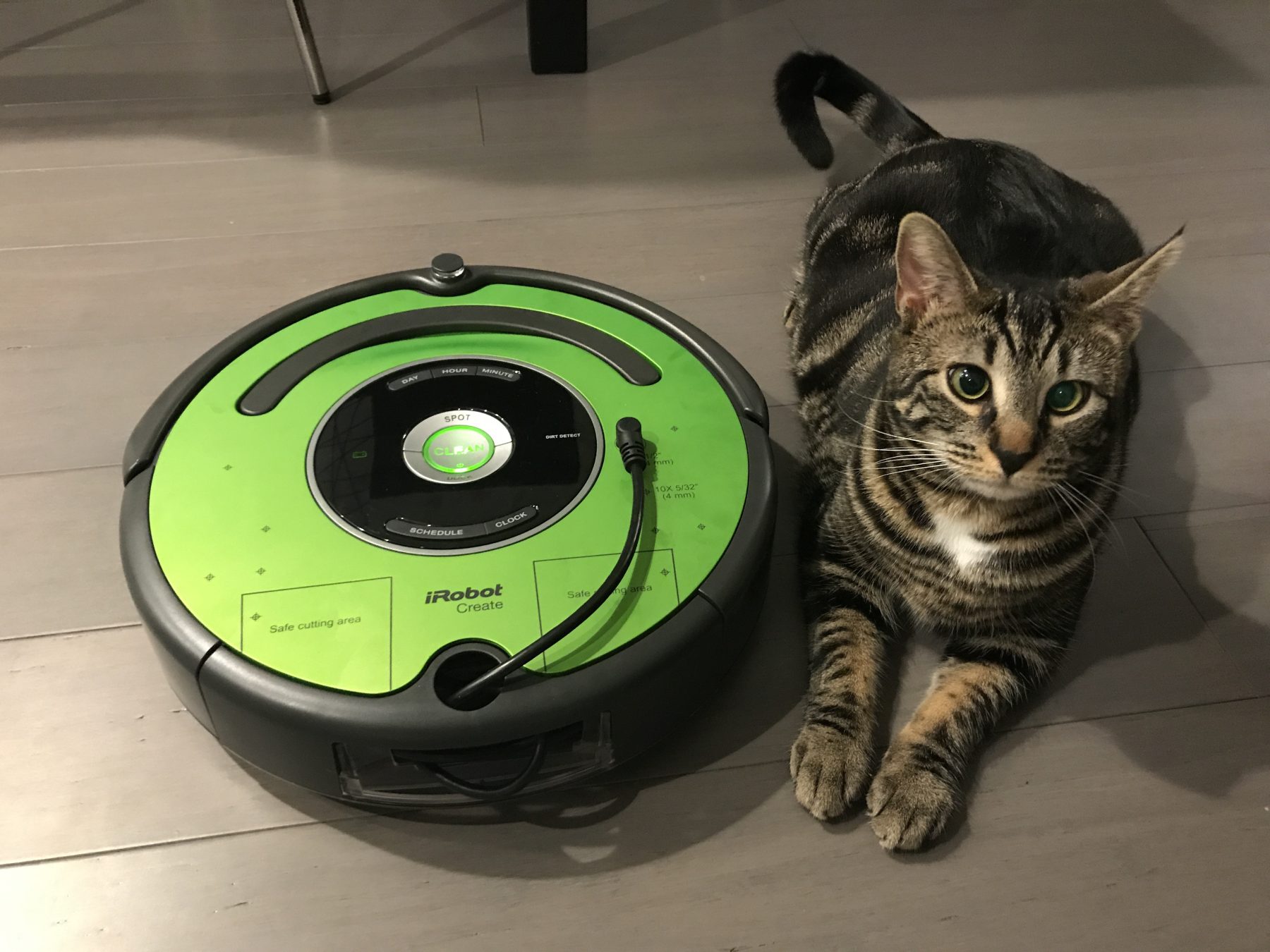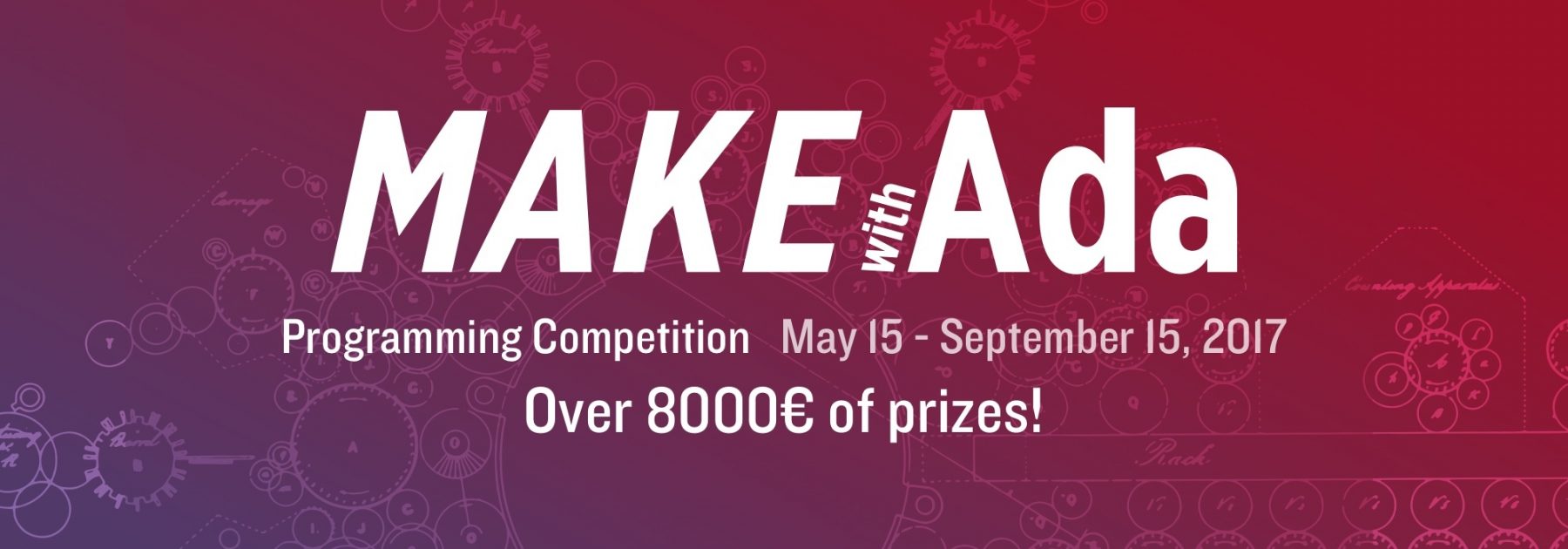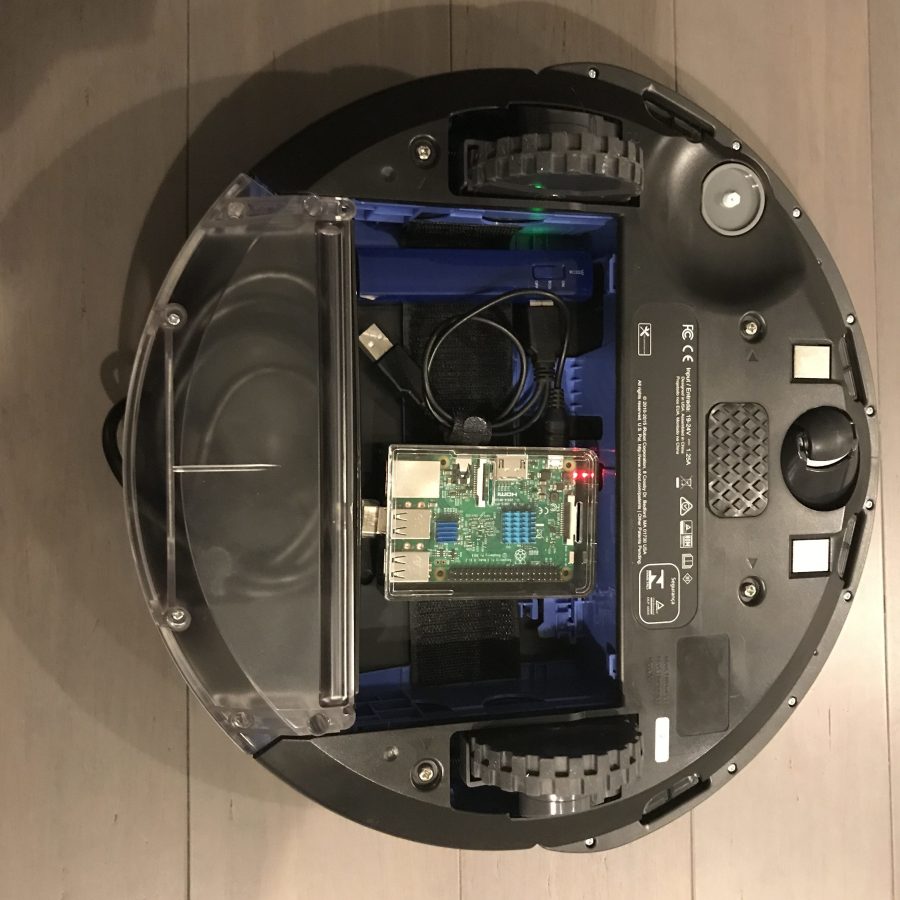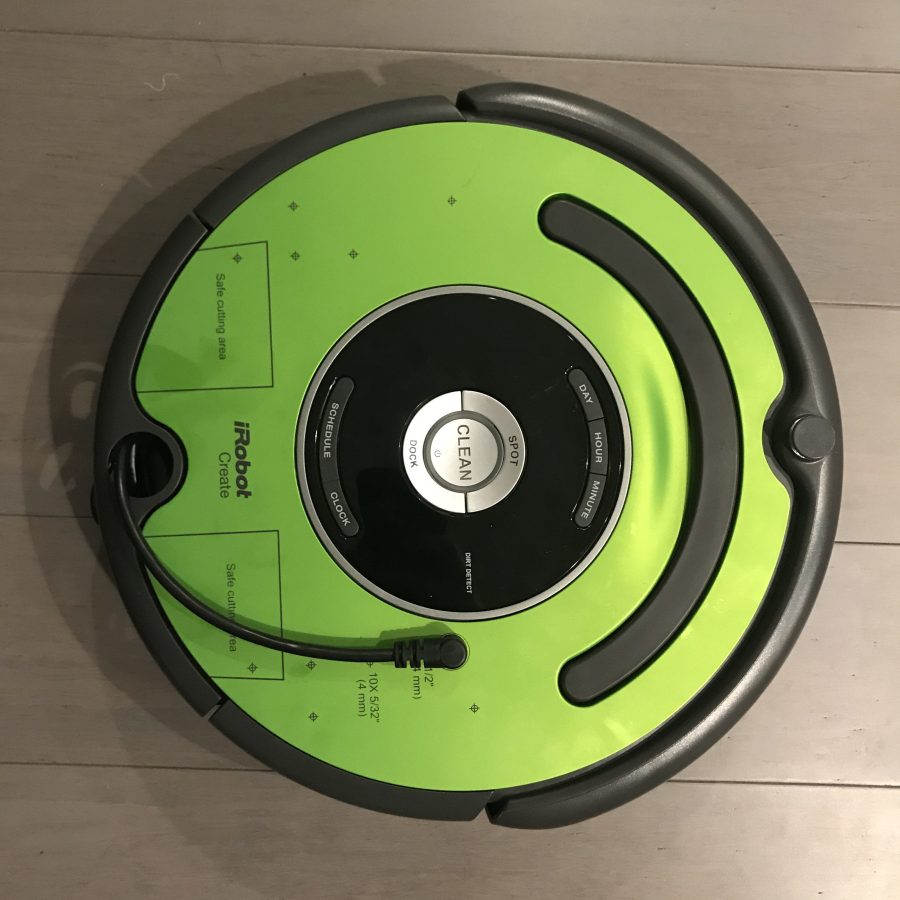The Adaroombot Project
by Rob Tice –

Owning an iRobot RoombaⓇ is an interesting experience. For those not familiar, the RoombaⓇ is a robot vacuum cleaner that’s about the diameter of a small pizza and stands tall enough to still fit under your bed. It has two independently driven wheels, a small-ish dust bin, a rechargeable battery, and a speaker programmed with pleasant sounding beeps and bloops telling you when it’s starting or stopping a cleaning job. You can set it up to clean on a recurring schedule through buttons on the robot, or with the new models, the mobile app. It picks up an impressive amount of dust and dirt and it makes you wonder how you used to live in a home that was that dirty.

A Project to Learn Ada
I found myself new to AdaCore without any knowledge of the Ada programming language around the same time I acquired a RoombaⓇ for my cats to use as a golf cart when I wasn’t home. In order to really learn Ada I decided I needed a good project to work on. Having come from an embedded Linux C/C++ background I decided to do a project involving a Raspberry Pi and something robotic that it could control. It just so happens that iRobot has a STEM initiative robot called the CreateⓇ 2 which is aimed towards embedded control projects. That’s how the AdaRoombot project was born.
The first goal of the project was to have a simple Ada program use the CreateⓇ 2’s serial port to perform some control algorithm. Mainly this would require the ability to send commands to the robot and receive feedback information from the robot’s numerous sensors. As part of the CreateⓇ 2 documentation package, there is a PDF detailing the serial port interface called the iRobot CreateⓇ 2 Open Interface Specification.
On the command side of things there is a simple protocol: each command starts with a one-byte opcode specifying which command is being issued and then is followed by a number of bytes carrying the data associated with the opcode, or the payload. For example, the Reset command has an opcode of 7 and has zero payload bytes. The Set Day/Time command has an opcode of 168 and has a 3-byte payload with a byte specifying the Day, another for the Hour, and another for the Minute. The interface for the Sensor data is a little more complicated. The host has the ability to request data from individual sensors, a list of sensors, or tell the robot to just stream the list over and over again for processing. To make things simple, I choose to just receive all the sensor data on each request.
Because we are using a Raspberry Pi, it is quite easy to communicate with a serial port using the Linux tty interface. As with most userspace driver interfaces in Linux, you open a file and read and write byte data to the file. So, from a software design perspective, the lowest level of the program abstraction should take robot commands and transform them into byte streams to write to the file, and conversely read bytes from the file and transform the byte data to sensor packets. The next level of the program should perform some algorithm by interpreting sensor data and transmitting commands to make the robot perform some task and the highest level of the program should start and stop the algorithm and do some sort of system monitoring.
The high level control algorithm I used is very simple: drive straight until I hit something, then turn around and repeat. However, the lower levels of the program where I am interfacing with peripherals is much more exciting. In order to talk to the serial port, I needed access to file I/O and Linux’s terminal I/O APIs.
Ada has cool features
Ada has a nifty way to interface with the Linux C libraries that can be seen near the bottom of “src/communication.ads”. There I am creating Ada specs for C calls, and then telling the compiler to use the C implementations supplied by Linux using pragma Import. This is similar to using extern in C. I am also using pragma Convention which tells the compiler to treat Ada records like C structs so that they can be passed into the imported C functions. With this I have the ability to interface to any C call I want using Ada, which is pretty cool. Here is an example mapping the C select call into Ada:
-- #include <sys/select.h>
-- fd_set represents file descriptor sets for the select function.
-- It is actually a bit array.
type Fd_Set is mod 2 ** 32;
pragma Convention (C, Fd_Set);
-- #include <sys/time.h>
-- time_t tv_sec - number of whole seconds of elapsed time.
-- long int tv_usec - Rest of the elapsed time in microseconds.
type Timeval is record
Tv_Sec : C.Int;
Tv_Usec : C.Int;
end record;
pragma Convention (C, Timeval);
function C_Select (Nfds : C.Int;
Readfds : access Fd_Set;
Writefds : access Fd_Set;
Exceptfds : access Fd_Set;
Timeout : access Timeval)
return C.int;
pragma Import (C, C_Select, "select");The other neat low-level feature to note here can be seen in “src/types.ads”. The record Sensor_Collection is a description of the data that will be received from the robot over the serial port. I am using a feature called a representation clause to tell the compiler where to put each component of the record in memory, and then overlaying the record on top of a byte stream. By doing this, I don’t have to use any bit masks or bit shift to access individual bits or fields within the byte stream. The compiler has taken care of this for me. Here is an example of a record which consists of Boolean values, or bits in a byte:
type Sensor_Light_Bumper is record
LT_Bump_Left : Boolean;
LT_Bump_Front_Left : Boolean;
LT_Bump_Center_Left : Boolean;
LT_Bump_Center_Right : Boolean;
LT_Bump_Front_Right : Boolean;
LT_Bump_Right : Boolean;
end record
with Size => 8;
for Sensor_Light_Bumper use record
LT_Bump_Left at 0 range 0 .. 0;
LT_Bump_Front_Left at 0 range 1 .. 1;
LT_Bump_Center_Left at 0 range 2 .. 2;
LT_Bump_Center_Right at 0 range 3 .. 3;
LT_Bump_Front_Right at 0 range 4 .. 4;
LT_Bump_Right at 0 range 5 .. 5;
end record;In this example, LT_Bump_Left is the first bit in the byte, LT_Bump_Front_Left is the next bit, and so on. In order to access these bits, I can simply use the dot notation to access members of the record, where with C I would have to mask and shift. Components that span multiple bytes can also include an endianness specification. This is useful because on this specific platform data is little endian, but the serial port protocol is big endian. So instead of byte swapping, I can specify certain records as having big endian mapping. The compiler then handles the swapping.
These are some of the really cool low level features available in Ada. On the high-level programming side, the algorithm development, Ada feels more like C++, but with some differences in philosophy. For instance, certain design patterns are more cumbersome to implement in Ada because of things like, Ada objects don’t have explicit constructors or destructors. But, after a small change in mind-set it was fairly easy to make the robot drive around the office.
The code for AdaRoombot, which is available on Github, can be compiled using the GNAT GPL cross compiler for the Raspberry Pi 2 located on the AdaCore Libre site. The directions to build and run the code is included in the README file in the root directory of the repo. The next step is to add some vision processing and make the robot chase a ball down the hallway. Stay tuned….
The code is available on GitHub: here.
Want to start creating and hacking with Ada? We have a great challenge for you!

The Make with Ada competition, hosted by AdaCore, calls on embedded developers across the globe to build cool embedded applications using the Ada and SPARK programming languages and offers over €8000 in total prizes. Celebrating its sophomore year, the Make With Ada Competition is designed to promote the benefits of the languages to the software development community at large. For more information and to register, go to makewithada.org.


